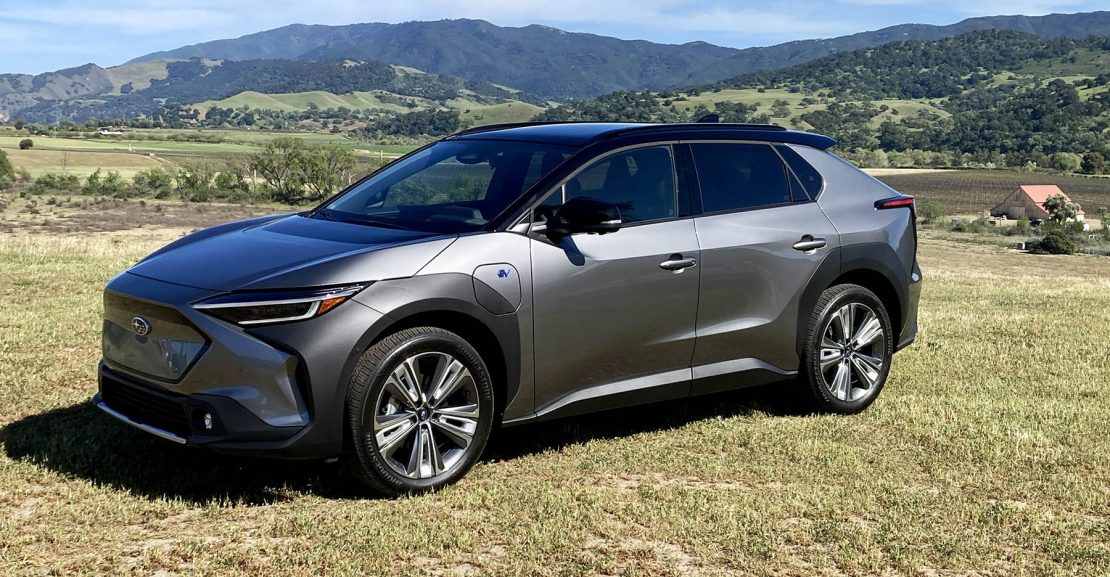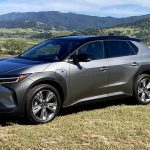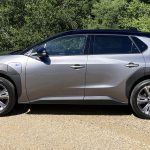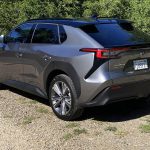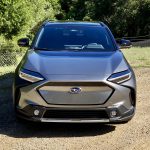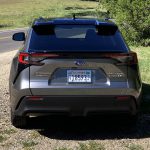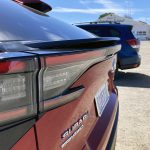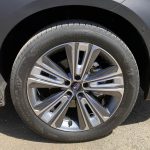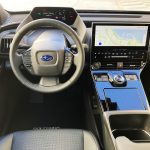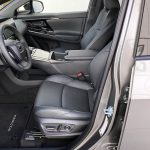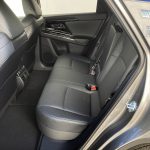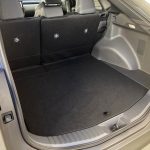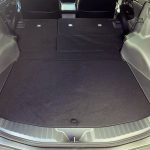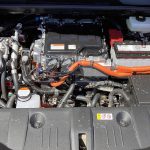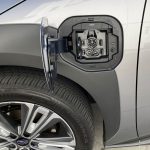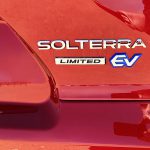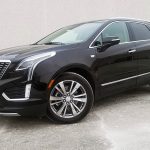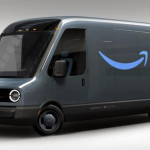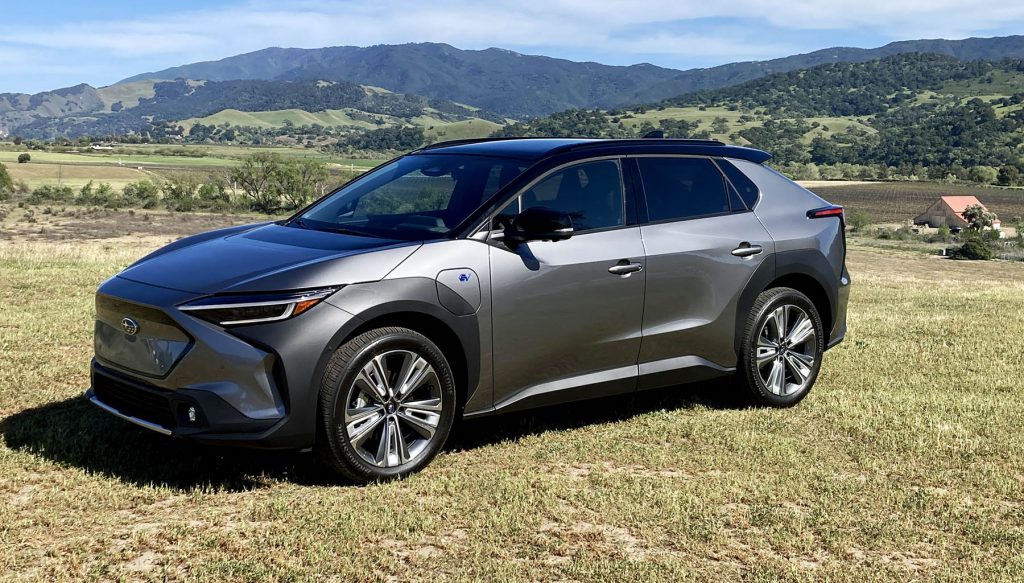

The stereotypical Subaru owner is an outdoorsy nature lover who’s at least a bit more environmentally conscious than the average American consumer, so it seems inevitable that Subaru would eventually enter the electric-vehicle market. And now it has. The 2023 Solterra is Subaru’s first pure EV: a two-row, five-passenger compact crossover SUV that is built on a platform shared with Toyota’s new bZ4X pure-electric SUV.
The Solterra (the name is a mashup of the Latin words for “sun” and “earth”) and Toyota bZ4X follow the pattern set by the two automakers’ previous collaborations on the Subaru BRZ and Toyota GR86 compact sports cars—the overall appearance of the two vehicles is very similar and the pricing is relatively close when similarly equipped. Both the Solterra and bZ4X have been designed around a flat cross-braced lithium-ion battery pack that’s built into the floor structure; the location helps protect the battery in the event of a collision while at the same time increasing the body’s rigidity. The most significant difference between the two is that the Solterra is offered solely with all-wheel drive (in keeping with Subaru tradition), while Toyota also sells less-expensive front-drive versions of the bZ4X that deliver up to 252 miles of estimated driving range. Like the bZ4X, the Solterra is built in Japan by Toyota.
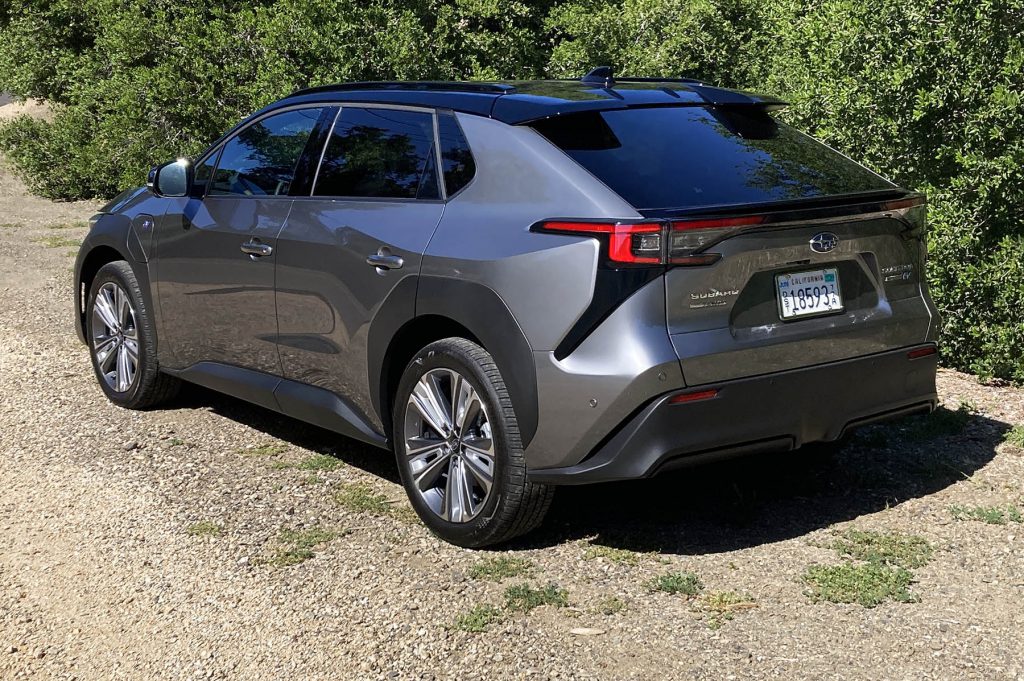
The Solterra has a 112.2-inch wheelbase, which is just about an inch and a half shy of the span under Subaru’s Ascent three-row midsize SUV. However, its overall length of 184.6 inches is just two and a half inches longer than the Subaru Forester compact SUV. The Solterra is also about two and a half inches shorter in height than the Forester, and it has tidier front and rear overhangs as well.
The Solterra is offered in three models. The entry-level Premium trim starts at $44,995 and comes standard with automatic climate control, cloth upholstery, heated front seats, an 8-inch touchscreen with cloud-based navigation, and 18-inch wheels. The $48,495 Limited gets a 12.3-inch touchscreen, Harman Kardon Premium audio, wireless phone charger, roof rails, a power rear liftgate, StarTex faux-leather upholstery, and 20-inch wheels. The top-line $51,995 Touring model’s additions include a sunroof, ventilated front seats, and ambient interior lighting. The destination fee adds $1225 across the board.
Test Drive: 2022 Mazda MX-30 EV
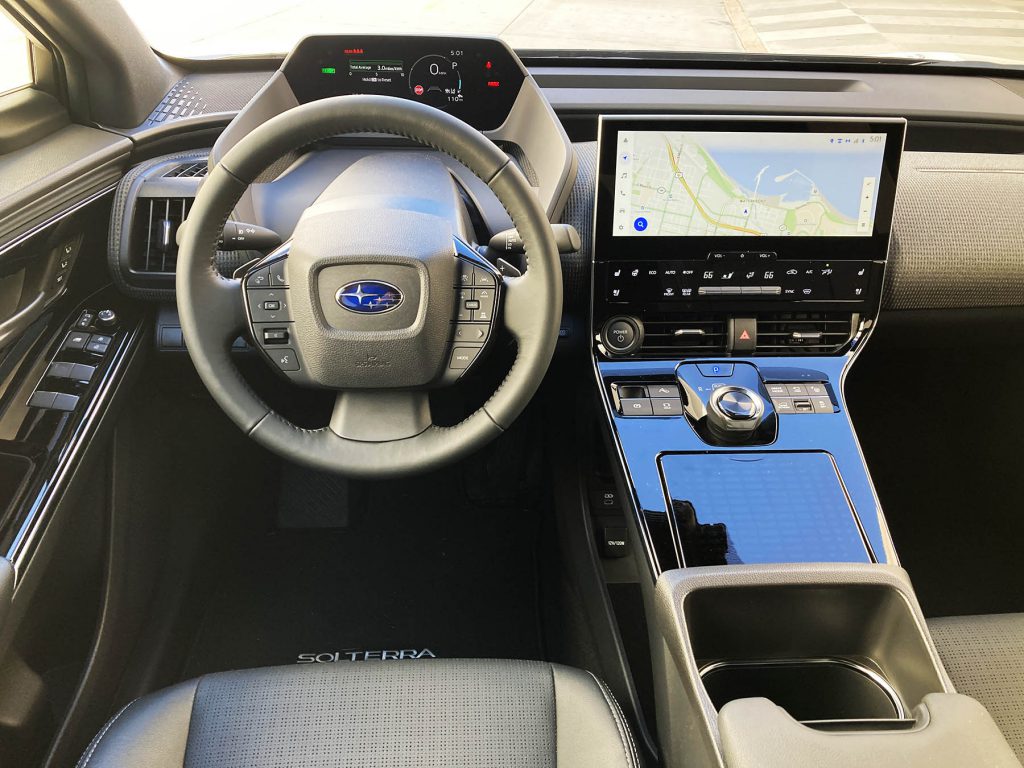
The Solterra’s drivetrain consists of a pair of electric motors—one motor drives the front wheels and the second drives the rear wheels, with each motor mated to a single-speed transaxle. Total output is 215 horsepower and 249 lb-ft of torque. The 72.8 kWh battery pack provides an estimated driving range of 228 miles for the Premium model, and 222 miles for the heavier Limited and Touring trims—a bit less than the norm for the current crop of pure-electric compact SUVs. Official EPA efficiency figures aren’t available yet, but Subaru estimates the Solterra Premium will be rated at 94 MPGe in the city, 114 MPGe on the highway, and 104 MPGe in combined city/highway driving. For Limited and Touring models, the estimated MPGe drops to 93/111/102. Level 2 charging takes about 9 hours to bring a depleted battery back to full, while DC fast charging can take the battery to an 80-percent charge in about an hour.
Test Drive: 2021 Volvo XC40 Recharge
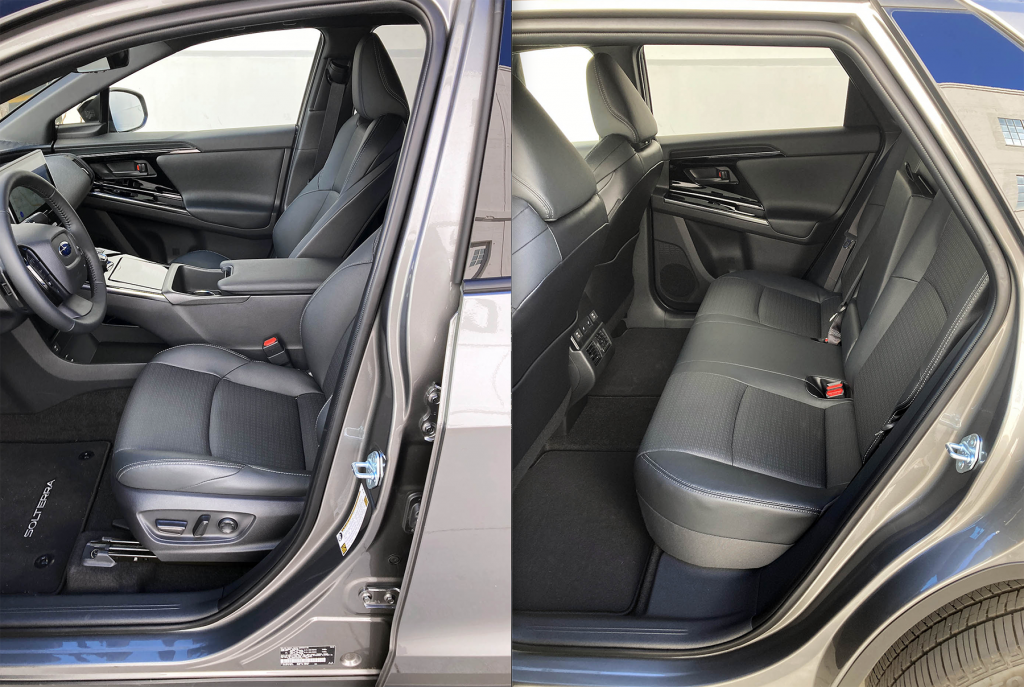
The all-wheel-drive system includes a dual-function X-MODE drive-mode system with Snow/Dirt and Deep Snow/Mud settings. Other system features are Grip Control (essentially a cruise-control setting that maintains a steady speed when driving in steep terrain), Downhill Assist Control (an off-road cruise-control feature that maintains a steady speed while going downhill), and Hill-Start Assist (which prevents the vehicle from rolling backward when starting out on a steep incline). Ground clearance is 8.3 inches (a bit less than the Forester’s 8.7 inches, but about a half-inch better than all but the Badlands version of the Ford Bronco Sport), and the wading depth is 19.7 inches—again, a competitive number among traditional compact crossover SUVs with off-road aspirations. The Solterra is positioned to appeal to Subaru’s outdoorsy customer base, so the roof structure was designed to statically support up to 700 pounds—enough to safely accommodate an appropriately sized roof-mounted tent.
Subaru has partnered with the EVgo and QMerit fast charging networks, and will provide owners with a $400 credit that can be used for public charging or toward the installation of a Level 2 charger at their home. Solterra owners will also be eligible for 10 days’ free use of a gas-powered Subaru loaner vehicle through their dealership.
Plug-in Perspective: Electric Pickup Trucks in Profile
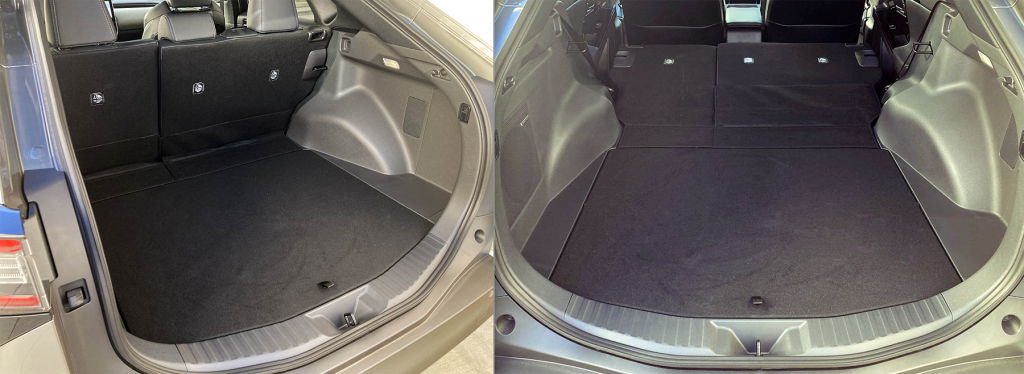
Standard safety equipment on the Solterra includes dynamic radar cruise control with lane tracing assist, lane departure prevention, emergency steering assist, intersection collision avoidance assist, pre-collision brake assist, pre-collision low-speed acceleration suppression, proactive driving assist (for pedestrian and cyclist avoidance) lead vehicle start alert, and road sign assist with vehicle speed limit warning. Other safety-related features include a rear seat reminder, rear-view camera with pedestrian warning, and safe exit assist (a new feature for Subaru that audibly and visually warns occupants of approaching vehicles before they attempt to exit the vehicle).
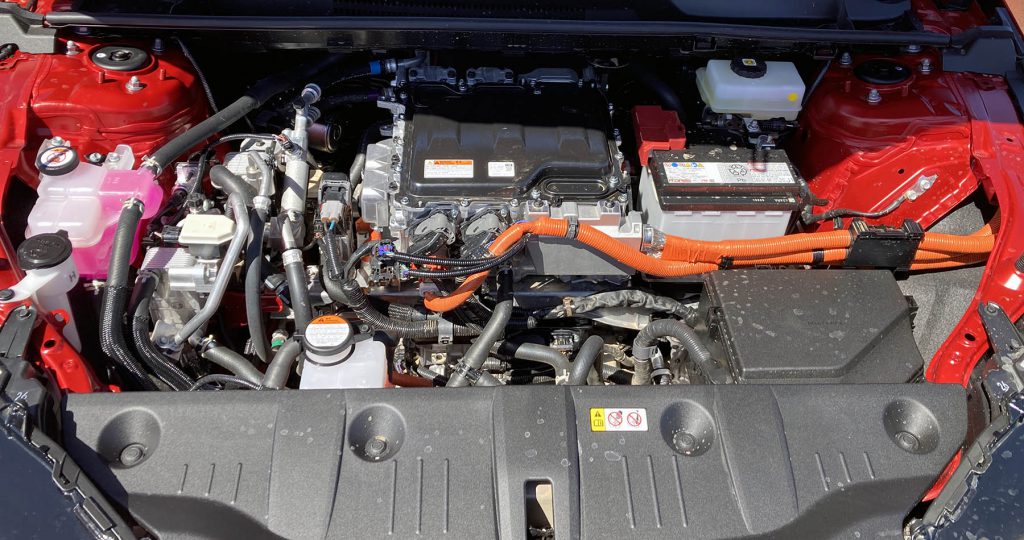
At a Solterra press-preview event in Southern California, we drove a Limited model off-road on Catalina Island, along with a Touring model on mainland roads around Santa Barbara. Though the Solterra’s horsepower rating sounds modest by today’s standards, the immediate throttle response and instant torque make it feel snappy and eager from behind the wheel. Subaru claims a 0-60 mph time of 6.5 seconds, which feels about right to us. On smooth Southern California roads, the Solterra rides comfortably and relatively quietly. It’s confident in the corners too, and the driving experience is nothing short of pleasant. We also liked the S-Pedal Drive feature, which uses steering-wheel-mounted paddles to adjust the level of regenerative braking (which uses the vehicle’s forward momentum to charge the battery, thus slowing the vehicle without using the brakes themselves). There are four regen levels to choose from. We quickly acclimated to the most aggressive setting, which slows the vehicle dramatically when you lift off the throttle and enables one-pedal driving—pay proper attention, you can bring the Solterra to a complete stop without using the brake pedal at all.
Subarus in general are known for off-road ability, and the Solterra delivers on this promise. Our test vehicle rode on the standard 20-inch all-season tires, which proved more than capable on winding gravel roads. Our press-preview drive route also included several challenging sections of rutted dirt roads that included steep climbs and equally sharp descents. The Solterra doesn’t have a two-speed transfer case with low-range gearing, but in the X-MODE’s Snow/Dirt setting and with the standard Grip Control system set in the third of five levels, the electric Subaru traversed these hills easily. Traction wasn’t a problem; even with the Solterra’s nose pointed skyward, adding throttle results in an immediate increase in forward motion.
Ground clearance wasn’t an issue during our drive, and we never heard anything bang off the Solterra’s underside. This drive route wasn’t as challenging as the Forest Service roads we covered last fall in our First Spin drive of Subaru’s Forester Wilderness, but we think the Solterra’s off-road abilities should more than meet the needs of the vast majority of its buyers.
CES 2022: Chrysler Airflow Concept
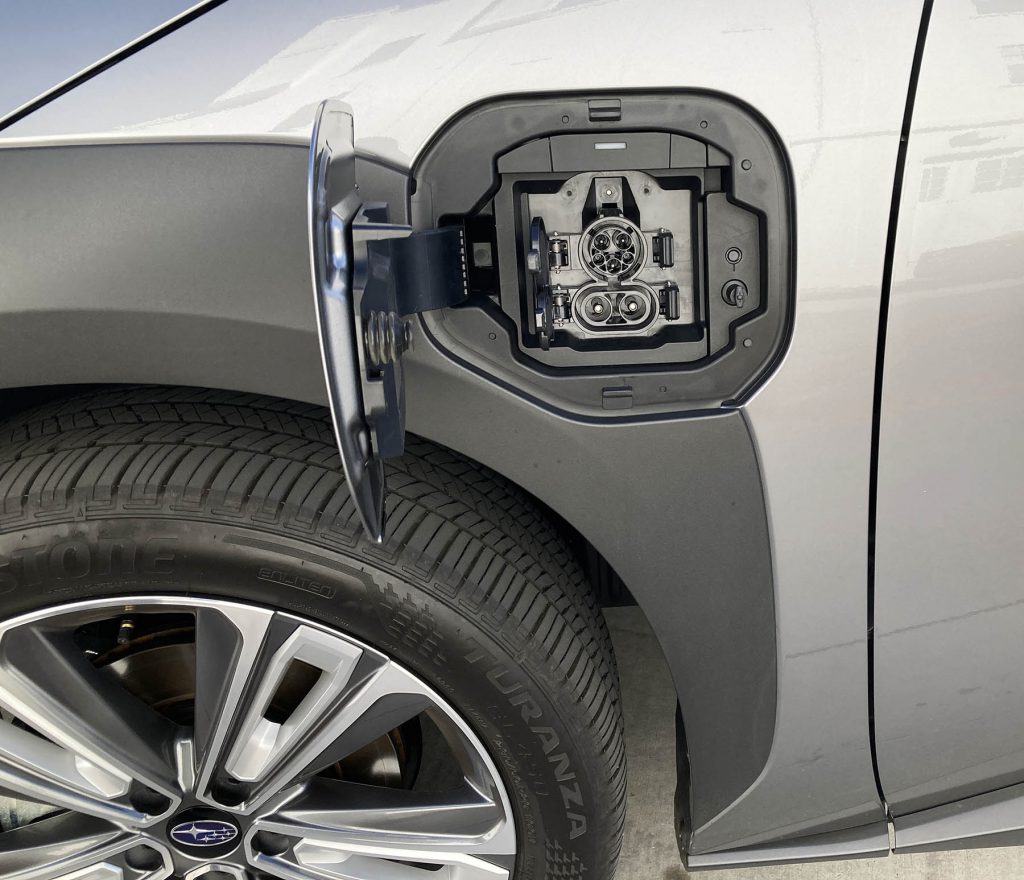
The Solterra’s interior has a more conventional appearance than some other recent electric SUVs—the Hyundai Ioniq 5, for instance. The cabin looks fine, but it appears to have been built with the budget in mind—there’s quite a bit of unexceptional hard plastic scattered about. Still, we like the quirky cloth-covered dashboard, and everything feels sturdy and is assembled with care. Both of the vehicles we drove had the black StarTex interior, which benefits modestly from a smattering of glossy black plastic accent trim. If you’re feeling more adventurous—or just looking for added pizzazz—we suggest checking out the handsome light gray and dark blue two-tone interior that’s available in Limited and Touring models.
The unusual dashboard layout forgoes a traditional hooded instrument cluster for a relatively small 7-inch LCD screen that’s mounted far forward of the steering wheel, near the base of the windshield. The idea is that rather than looking at the instruments through the steering wheel, you view the screen over the top of the steering-wheel rim, similar to a windshield-projected head-up display. We acclimated almost immediately and found the screen generally easy to read, with the exception of a few small indicator lights that were difficult to decipher. The display screen sits out in the open, but we had no trouble with it getting washed out on a sunny California day, and the markings remained easy to read when we were wearing our favorite polarized Ray Bans. We also had no problems seeing over the top of the cluster—it didn’t compromise the fine view afforded by the Solterra’s low cowl—but some shorter-stature colleagues on the drive event complained that the top edge of the screen blocked their forward view out the windshield.
The Solterra’s seating position is more car-like than you might expect of a small SUV, meaning you sit a little closer to the floor with your legs stretched out a bit in front of you. Still, space is generous all around for six-footers, and we were very comfortable both behind the wheel and while riding shotgun. The rear-seat area is sized for adults too, and entry/exit are easy. Headroom is generous front and back, even under the housing for the Touring’s standard sunroof. Small-items storage is no better than average overall (the lack of a traditional glovebox is a conspicuous omission), but we appreciated the generously sized “purse porch” open-sided storage bin located underneath the center console. The covered compartment atop the console, which houses a wireless charging pad for your phone, is a nice touch too. There’s a lone USB-A outlet located in the wireless-charger compartment, along with two USB-C charging ports on the front wall of the purse porch and a second pair on the back of the center console for rear-seat passengers.
Test Drive: 2022 Hyundai Kona Electric Limited
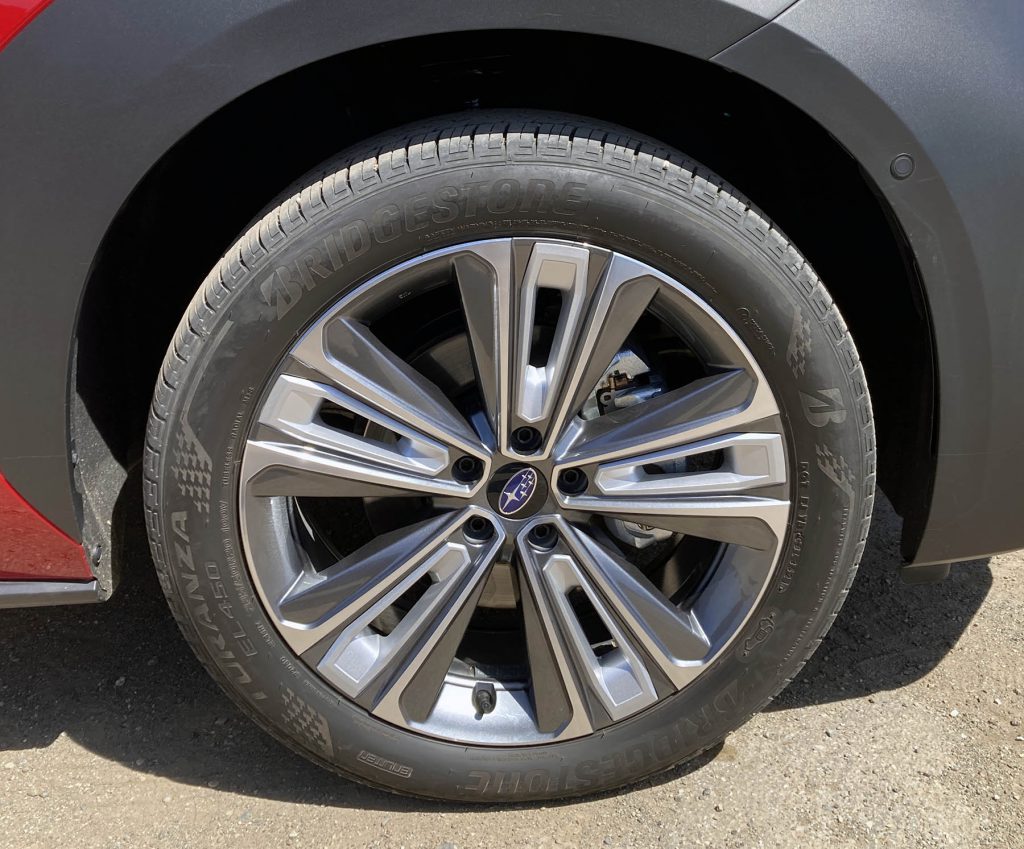
The Solterra/bZ4X infotainment system uses Toyota’s latest architecture, as seen in the new Toyota Tundra and Lexus NX. Both of the test vehicles we drove were equipped with the 12.3-inch touchscreen, which reacts quickly to inputs and boasts sharp, easy-to-read graphics. Wireless Apple CarPlay/Android Auto connectivity are included, and there is also an Intelligent Assistant that allows for “Hey Subaru” voice-command control of select audio-system, phone, and dual-zone climate-control functions. Below the touchscreen is a small collection of physical buttons for infotainment-system power, audio volume, and certain climate-control functions, but most other climate-control functions use touch-sensitive controls that are integrated into the glossy black trim panel. Unfortunately, these controls didn’t always respond on the first try. The high console slopes down from the touchscreen and houses a rotary-knob gear selector that’s flanked by physical controls for the electronic parking brake, various drive-mode settings, and the available surround-view camera.
Behind the rear seats, the 27.7-cubic-foot cargo area is easy to access, and the split-folding rear seat backs flip forward easily to create a flat load floor. The cargo floor has a large panel that lifts up to reveal a bit of underfloor storage. The floor panel is removable, and can be installed in a lower position that drops it nearly three inches closer to the ground to create additional vertical space for tall objects (and increase the cargo area’s capacity to 29.0 cubic feet). The trade-off is that the load floor is no longer flat, but we can still see this feature being a benefit, even if only in unusual circumstances. Also, that rear cargo area is all you get—unlike some other pure-electric compact SUVs, the Solterra doesn’t include a “frunk” storage area under the hood. Subaru says this was an intentional design choice, and that including a frunk would have changed the vehicle’s proportions and made for a longer front overhang that would adversely affect the approach angle in off-road driving.
If all of this trips your trigger, you might have to wait a while. Deliveries of the Subaru Solterra are set begin this summer, but the entire initial production run of 6500 units has already been reserved by customers via Subaru’s website. The reservation process is presently closed, but Subaru expects availability to resume after the new year.
Like its bZ4X counterpart, the Solterra strikes us as a somewhat tentative step into the expanding and increasingly competitive electric-vehicle market. Its driving range and charging speeds are not game-changing, and its shared architecture means the “pure Subaru” look and feel is diluted at best—which is more of an issue here than in the outlier BRZ sports car. Still, the Solterra acquits itself surprisingly well in off-road driving, and stays true enough to Subaru’s image that brand-loyalist shoppers should embrace it. The excellent throttle response and instant torque from the electric drivetrain are a definite benefit wherever you’re driving, and even on all-season tires the Solterra should be able to take outdoors-loving owners to most of the places they want to go.
Los Angeles Auto Show: 2023 Fisker Ocean
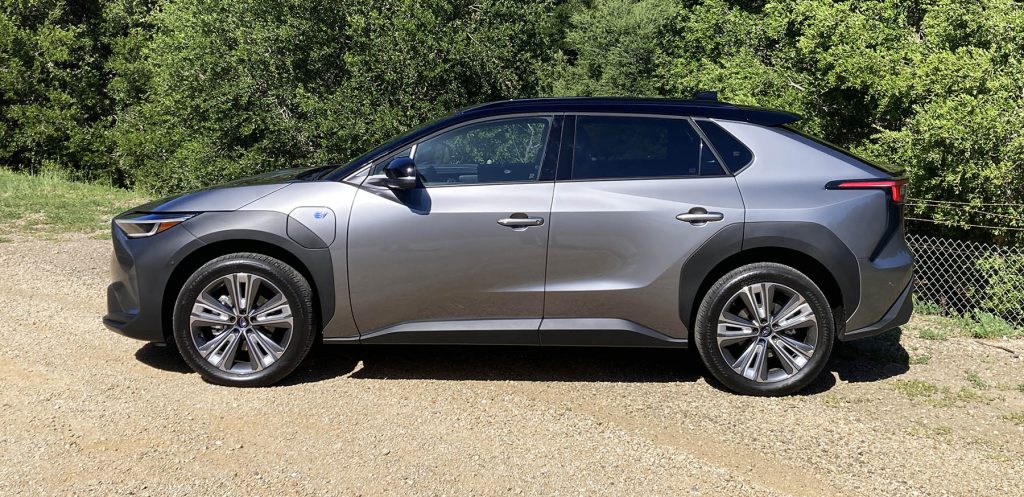
Check out the Consumer Guide Car Stuff Podcast
2023 Subaru Solterra Gallery
(Click below for enlarged images)
2023 Subaru Solterra

